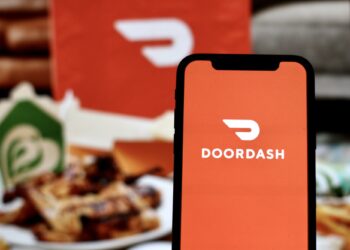The Gist
-
Brand LLM integration. A brand LLM lets brands centralize their identity and streamline customer interactions, which creates consistency across every communication.
-
Personalization with AI. Generative AI transforms personalization in brand management and allows real-time customizations of text, images and videos to engage customers.
-
Compliance and localization. Brand LLMs help manage local regulations and maintain compliance across markets while preserving brand consistency.
With a brand LLM, brands can bridge a huge gap with their customers. A brand LLM encapsulates all that your company brand represents and forms the basis for every customer interaction, including those with AI agents.
A brand is the founders’ reputation at scale. The first brands were used by farmers to mark their cattle. One farmer simply couldn’t make it to two Saturday cattle markets simultaneously. Branding their cattle provided the needed scalability.
But from here, things have gone pear-shaped. With every new hire, companies transform into silos. Silos work for a brand like a split personality because every department speaks its own language or dialect, which makes consistent brand management difficult.
The result is that brands share what they want customers to hear, not what customers want to hear from companies. Quite frankly, 99% of marketing communications are monologues. With a brand LLM, companies can start engaging in dialogues with the sole goal of solving the client’s problems and improving their lives.
Table of Contents
The Power of Dialogue in Brand Management
A dialogue is successful when it gives the customer the feeling that the brand understands them and is offering them what they need. It’s as simple as that.
Engaging in a customer dialogue gives companies better results in both the short and long term for three reasons. First, up to 90% of the value of S&P 500 companies lies in intangible assets, primarily “future customer intentions to buy.” These intentions are held in the minds of prospects, which makes brand management far more than just storing logos and assets on a shared server. Brand management also involves shaping and managing preferences in customers’ minds and hearts. This shift elevates the importance of a brand LLM, which could become your organization’s most valuable asset.
Second, a brand LLM both centralizes assets and makes sure that every interaction aligns with local laws, product variations and brand guidelines. For example, promoting a car door knob color in a region where that variation isn’t available can erode trust and hurt sales. Similarly, failing to localize a tagline (i.e., not translating it into another language) could result in regulatory penalties. A brand LLM automates compliance, mitigates risks and maintains consistency across global markets.
Third, a brand LLM offers groundbreaking opportunities in personalization. While text-based personalization has become commonplace, visual content often lags and remains static. With a brand LLM, real-time customization of copy, images and videos becomes achievable. This innovation allows brands to communicate with visuals as personalized and dynamic as their text. Importantly, it also makes sure that personalization remains relevant and respectful and that it avoids the “creepy factor,” which can alienate customers if personalization crosses the line.
Related Article: Abandon Hyper-Personalization, Create Tailored Customer Experiences
Integrating Data and Content Layers for Effective Brand Management
Many brands can almost perfectly collect and interpret customer data, but still “mumble” due to poor content delivery. While they stream customer data in real time, there are often delays (sometimes hours or even days) before the relevant content is ready to be used.
Many brands have a data layer in place that collects, processes, cleanses, enriches and analyzes customer data, then segments and delivers it to the appropriate engagement channels.
Unlike the data layer, which processes primarily numeric data in the back end, the content layer handles customer-facing elements like copy, images and videos. While the data layer is nearly seamlessly integrated, the content layer remains siloed, fragmented and manual.
The content hurdle is particularly evident in time-sensitive campaigns across complex markets with multiple segments, languages and currencies, making brand management even more challenging. For example, a delayed product image can cost a tech manufacturer millions in lost revenue and (digital) shelf space. Or, consider a different context. In an ecommerce environment, a real-time in-basket offering with hyper-personalized content is critical when shoppers are just a mouse move away from exiting the site.
Challenges in the Content Layer and How to Overcome Them
The content layer is often non-existent or, at best, broken. While the data layer seamlessly processes information through tightly integrated steps using APIs and (reverse) ETL mechanisms, the same level of integration among the following systems in the content supply chain remains far from reality. These systems in the content layer are not integrated or poorly integrated.

The challenge here doesn’t lie in content vendors performing poorly. Rather, the difficulty in rendering content in real time stems from three major obstacles. For one, human creativity is hard to mimic for computers, which is why so much manual work is required (think internal studios). Also, rendering large files, such as image and video assets, requires significantly more processing power than numeric data (think about the size of Photoshop, MOV or MP4 files).
Finally, seamlessly transferring large content files across systems is still a manual process (think WeTransfer, WeSendIt). These challenges have left the content layer immature for decades, which makes it difficult to even conceive its full potential.
More recently, generative AI has changed the game entirely, and it offers the creativity, computational power and integration needed to reshape the content layer and streamline brand management.
Related Article: Is Your AI Content Management Strategy Ready for the New Era?
Building a Dynamic Content Layer With Generative AI
How can brands start shaping their content layer? One thing we’ve learned over decades of creating content is the importance of the master file. The master file is the original, highest-quality version of a digital asset, and it is uncompressed, high-resolution and complete with metadata. It’s the source for creating derivative versions for web, print, TV or social media.
However, regional adaptations often dilute the brand and message. This has led to a long-standing best practice of limiting master file access to trained, instructed creatives of creative studios only. As John van Tuyll, senior director of global brand marketing operations at Adidas, said, “Don’t share the master file.”
With generative AI, the concept of the master file can evolve. Instead of using static master files, brands can create a brand LLM that serves as the dynamic source for content creation. There are multiple brand LLM use cases in daily marketing activities. For example, the brand LLM could be integrated into its own user interface, where content is uploaded or accessed via an API to generate specific outputs.
These outputs might include annotating brand materials for compliance and consistency, suggesting adaptations to improve conversion rates or meet local regulations and optimizing brand materials for high-performance, data-driven campaigns. The brand LLM can also produce real-time content for collateral and campaigns and activate channel-specific content tailored to audience parameters, streaming it directly to customers via engagement solutions. Embracing the dynamic capabilities of brand LLMs not only transforms how content is managed, but it also elevates brand management to a new level of precision, adaptability and efficiency.
Core Questions Around Developing a BrandLLM
What makes a BrandLLM different from a traditional brand style guide?
A BrandLLM is not a dynamic version of a traditional brand style guide. While a style guide documents rules for branding consistency, a BrandLLM actively interprets intent, generates, validates, and adapts content in real time. It ensures compliance, personalization, and alignment with the brand’s evolving identity, automating what was previously a manual and fragmented process.
How can companies ensure their BrandLLM stays relevant and effective?
To keep a BrandLLM relevant, companies should continuously moderate and train it with new brand assets, market regulations, and customer insights. Integrating it with real-time engagement tools and regularly fine-tuning it based on performance data ensures that the model remains accurate, compliant, and valuable for customer interactions.
Learn how you can join our contributor community.






